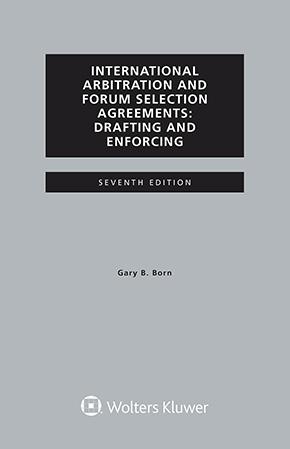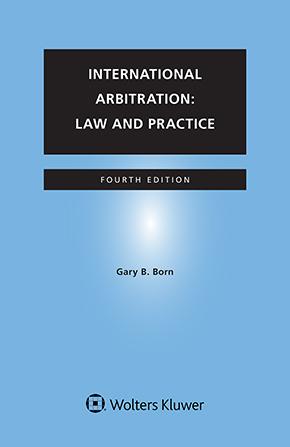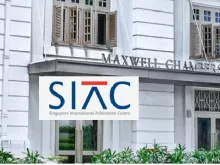Hong Kong Arbitration Week 2025: The Evolving Role of Arbitral Institutions
October 24, 2025
On the third day of Hong Kong Arbitration Week 2025, the flagship event of the week—the ADR in Asia Conference—took place, continuing a long-standing tradition. The conference opened with Welcome Remarks by Joanne Lau, Secretary-General of the HKIAC, followed by a Keynote Address delivered by The Honorable Madam Justice Mimmie Chan.
This post focuses on the panel discussion, entitled “The Evolving Role of Arbitral Institutions: Less is More?”. The panel addressed the question of whether arbitral institutions should do “less or more” in modern arbitration. Panelists included Bernard Hanotiau (Partner, Hanotiau Tossens Goldman), David W. Rivkin (Independent Arbitrator, Arbitration Chambers; Co-Chair, HKIAC), May Tai (Independent Arbitrator), and Fatima Balfaqeeh (Managing Partner, Balfaqeeh Advocates & Legal Consultants). The discussion was moderated by Cameron Sim (Partner, Peter & Kim).
The session featured audience participation through live polling, allowing attendees to submit responses to questions posed during the discussion. The dialogue was structured around these questions, providing an interactive and engaging format to examine the evolving role of arbitral institutions.
Mr. Sim opened the discussion with an overview of developments in arbitral institutions in recent years. He noted that, judging from the various mechanisms that institutions have introduced, they have been under increasing pressure to do more rather than less to promote justice in arbitration, through greater oversight, innovation, and procedural efficiency. For example, many institutions have updated provisions on consolidation, joinder, emergency arbitrators, and expedited proceedings, all of which are relatively recent innovations. The panelists expressed positive views on this trend, noting that it reflects the collective experience gained through the management of hundreds of cases (Tai), responds to user needs for more efficient and predictable procedures (Rivkin), particularly for those seeking to minimize potential involvement of domestic courts (Balfaqeeh), and helps to equalize disparities between parties and jurisdictions (Hanotiau).
Arbitral Institutions as Gatekeepers
The first question posed to the panelists and the audience was “How important is it that arbitral institutions perform a gatekeeper function?” Among choices of not important, marginally important, important, and very important, the poll showed a clear majority for “important” and “very important”.
Mr. Rivkin noted the importance of who performs the gatekeeping function, as this varies across institutions. At the HKIAC, for example, such decisions are made by experienced practitioners supported by the Secretariat, whereas in other systems, the Secretariat itself may make these determinations with less practitioner oversight. Ms. Tai emphasized that gatekeeping should be exercised with caution, particularly when the institution’s decision concerns bringing a non-signatory to an arbitration agreement into the arbitration.
Binding a Non-Signatory to an Arbitration Agreement
The next question was “When assessing whether a non-signatory should be bound by an arbitration agreement, what level of scrutiny should institutions apply?”. The choices here were none (letting the tribunal decide jurisdiction), minimal (prima facie test), and maximum (involving analysis of the fact and law in detail). The majority of the audience chose minimal (prima facie) scrutiny.
Prof. Hanotiau expressed his support for a minimal scrutiny approach in line with the ICC Rules, under which a case proceeds unless the court is prima facie satisfied that no binding arbitration agreement exists. The threshold, he noted, is intentionally low: proceedings should continue unless it is clear that no agreement could bind the parties.
He explained that beyond this prima facie stage, jurisdictional issues often involve complex questions of fact and law that are best determined by tribunals rather than institutions. Examples include whether a signatory acted as an agent and bound its principal, whether a non-signatory qualifies as a third-party beneficiary, whether an arbitration clause was incorporated by reference, and whether an issue of corporate veil piercing justifies extending consent to non-signatories. Mr. Rivkin and Ms. Balfaqeeh added that the issue is further complicated by arguments about waiver by conduct or participation without objection.
“Compatibility” Between Arbitration Agreements
The third question was “Which differences still allow “compatibility” between two arbitration agreements?” The options presented were different governing laws, different seats, different languages, and different appointment mechanisms, with different languages topping the polls.
Mr. Sim highlighted the importance of maintaining efficiency and consistency in decisions as complex transactions increased, as they often involve multiple contracts and parties. In this light, the institutional power to consolidate or to allow a single arbitration based on multiple arbitration agreements has become essential.
Mr. Rivkin noted that although a Hong Kong court decision (SYL and LBL v. GIF [2024] HKCFI 1324) raised questions about compatibility, under the HKIAC Rules, the general approach remains that arbitration agreements do not have to be identical, but can be deemed compatible considering practical factors such as efficiency, party autonomy, and procedural fairness. He, however, considered different seats to be more challenging than other factors, as the seat changes the supervisory jurisdiction.
Ms. Tai emphasized that many institutional rules expressly empower institutions to set or harmonize appointment methods in the interests of efficiency and fairness, particularly in contexts such as emergency arbitrator and expedited procedures.
Ms. Balfaqeeh noted that courts in Dubai have supported consolidation where there is unity of parties and purpose, even when some agreements contain differing arbitration clauses or when some of them remain silent on certain elements of the arbitration agreement. She further observed that there are practical methods to harmonize related proceedings, such as appointing the same sole arbitrator across multiple cases to avoid inconsistency in awards.
Prof. Hanotiau added that the general approach should be pro-compatibility, emphasizing that as long as the core consent to arbitrate and the essential procedural framework remain intact, differences in detail can still be regarded as compatible.
Overriding Party Nominations
The final question was “Should institutions have the power to override party nominations?” While the audience was roughly split at first, when Mr. Sim described a scenario wherein a respondent nominates an arbitrator with very limited availability while the claimant has submitted that the time is of the essence, the audience polls moved more in support of overriding.
The panelists generally agreed on the need for arbitral institutions to have the power to override party nominations, while emphasizing that such power should be exercised subtly and with caution, in respect of party autonomy and confidentiality.
Ms. Tai clarified that the discussion referred specifically to situations where institutions may override nominations on grounds of suitability, availability, or efficiency, and not to cases involving conflicts of interest, independence, or consolidation / joinder. She further noted that major institutional rules—such as those of the SIAC, HKIAC, and ICC—expressly grant discretion to institutions through mechanisms like confirmation of appointments, although this discretion is used sparingly.
Conclusion
This panel highlighted the continuing evolution of arbitral institutions and their expanding role in meeting the needs of users and the demands of modern arbitration. The discussions reflected broad consensus that institutions must balance innovation and efficiency with caution and respect for party autonomy.
The discussions underscored that arbitral institutions are at a pivotal moment in defining the scope of their involvement in arbitral proceedings, bringing to light the core issues that require careful and collective consideration. While users increasingly expect institutions to play a more active role in ensuring integrity and efficiency, there remains a strong call to preserve the party autonomy that lies at the heart of arbitration. In response, many institutions have recently amended, or are in the process of amending, their rules to refine the balance, experimenting with different levels of procedural oversight and discretion to identify the optimal equilibrium. As the reforms take hold and new cases are administered under the revised frameworks, their practical impact will gradually become clearer to the wider arbitration community and will prompt continuing—and evolving—discussion.
More coverage from Hong Kong Arbitration Week is available here.
You may also like










